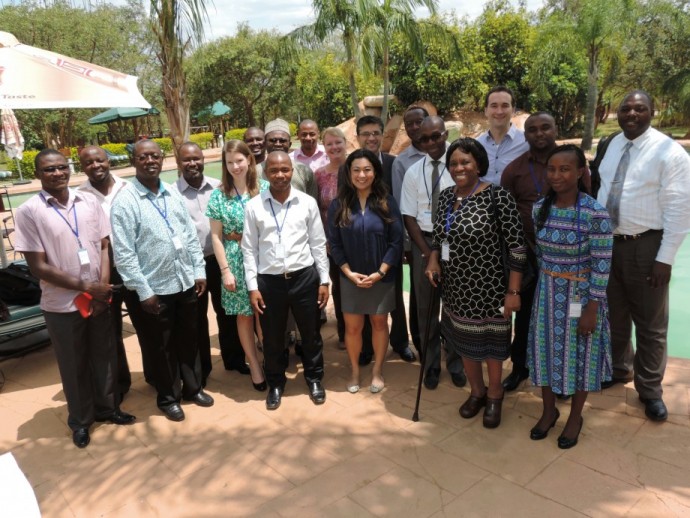Highlights from the BLN Design Collaborative
By Mathew Mwetela, Communications Officer, BID Initiative
Jan 15, 2015
Posted in BID Learning Network (BLN)

BID Learning Network Design Collaborative in Lusaka, Zambia. Photo: PATH
The BID Initiative Learning Network (BLN) Design Collaborative meeting held in Lusaka, Zambia from 1st-4th December 2014, drew participants from nine sub-Saharan African countries who met to discuss and iterate on the design of BID Initiative solutions, specifically country immunization information system needs.
Opening Ceremony
The meeting was officially opened by the Ministry of Community Development Mother and Child Health (MCDMCH) Director of Child Health Dr. Caroline Phiri on behalf of the Permanent Secretary Prof. Elwyn Chomba. In the opening remarks, Dr. Phiri welcomed the BID Initiative and noted that the Government of the Republic of Zambia is looking forward to partnering to help address some of the challenges the country is facing in improving its immunization program. Dr. Phiri noted that the BID Initiative’s goal of enhancing health service delivery through improved data collection, quality, and use resonates well with Zambia’s national vision to offer equitable quality health care services to its people. This is particularly relevant since Zambia is one of the BID Initiative demonstration countries.
Our Global Director, Liz Peloso, also addressed participants, emphasizing our country-owned, country-led approach and noting that the Design Collaborative meeting will play a critical role in designing appropriate information systems that will help improve country immunization programs.
Session Highlights
A number of interesting and interactive sessions were held sparking insightful discussions. Here are a few key takeaways:
- Participants found tremendous value in learning from one another. The ability to learn about successful country experiences, allowed for a better understanding of how to approach improving health systems. A vibrant “knowledge café” session around change management, data visualization, and interoperability was of particular interest to participants who shared relevant experiences on these topics.
- There were interesting discussions around the Enterprise Architecture approach and the importance of bridging the communication gap between people who need the immunization information system and those who develop it.
- Participants shared their experiences and challenges with integrating multiple systems together, in particular the implications one system or infrastructure choice would have on future options and decisions.
- Significant time was spent reviewing various health information system platforms to evaluate benefits and limitations using common requirements. Participants agreed that while certain aspects of immunization systems are unique to a country, the core principles are largely the same.
- Selecting a vendor to implement a health information system is often a major challenge in participant countries. Attendees participated in interactive sessions walking through the RFP process, including the development of a vendor evaluation checklist and rating system.
Field Visits
Participants visited Kalingalinga and Chilenje, primary level health facilities in peri-urban communities of Lusaka, to understand how the immunization business process works in a health care facility and to evaluate its effectiveness. Participants made observations primarily related to the clinics’ current data and vaccine management processes:
- The process to manage immunizations is heavily manual with a lot of paper work.
- The system of generating reports is slow with the majority of reports completed by hand and sent to the district health office for processing.
- There is inadequate staffing to capture and manage the data.
- Facilities need to integrate the multiple registries being used in order to enhance efficiency and streamline data collection and management.
- The system to manage and store vaccine stock needs improvement.
We will share the full report on the BLN Design Collaborative meeting soon. In the meantime, learn more about the participants’ experience at the meeting in Perspectives on the Design Collaborative and view photos from the event.
